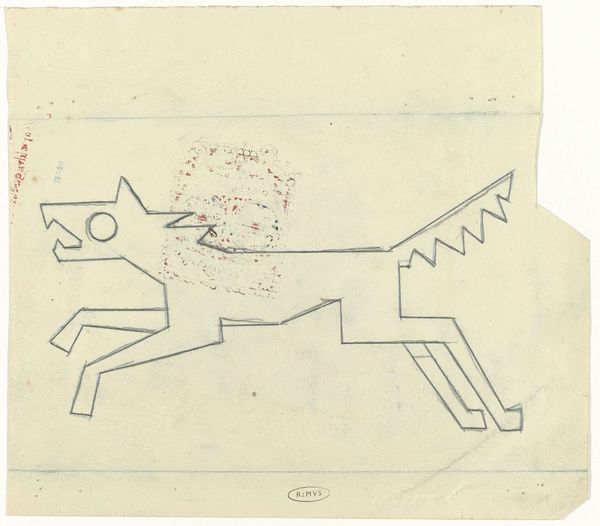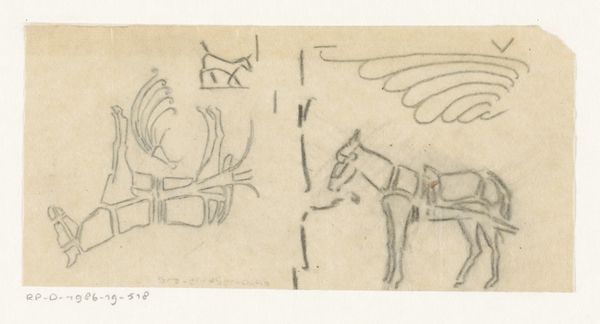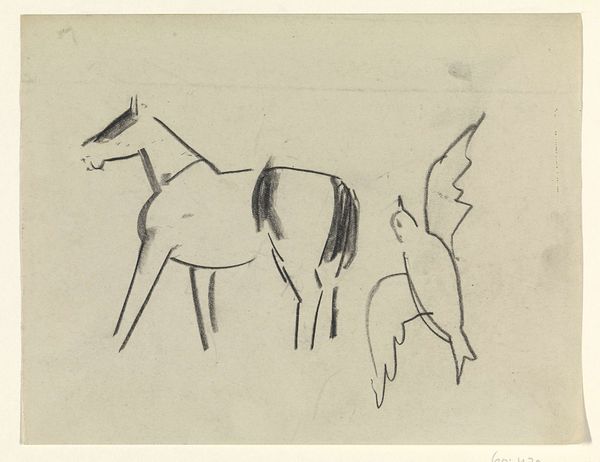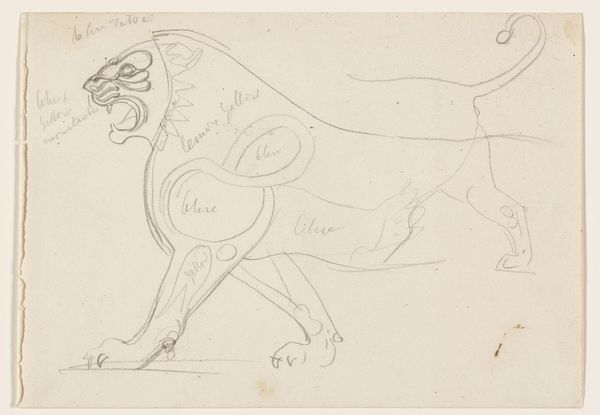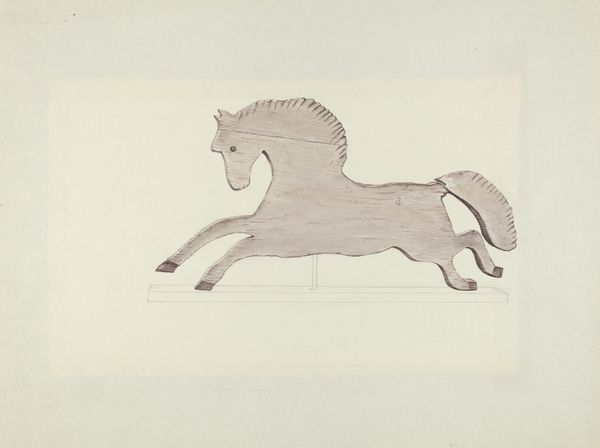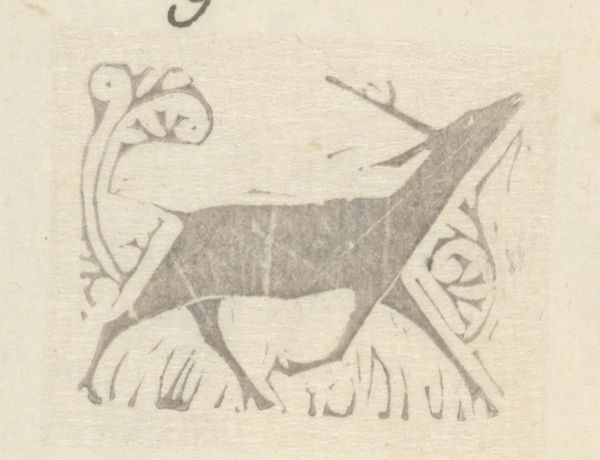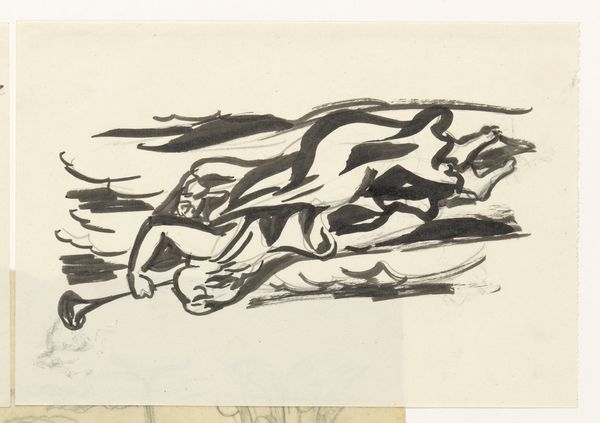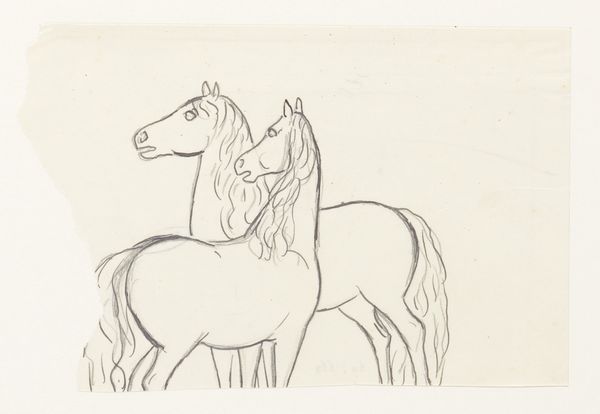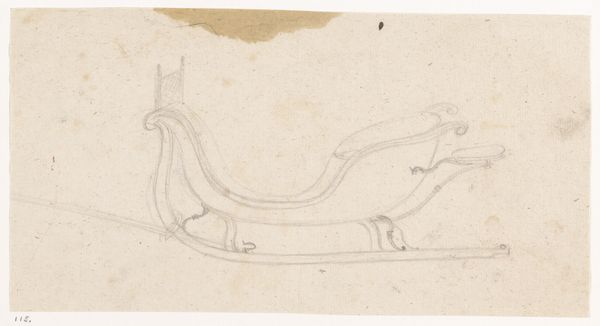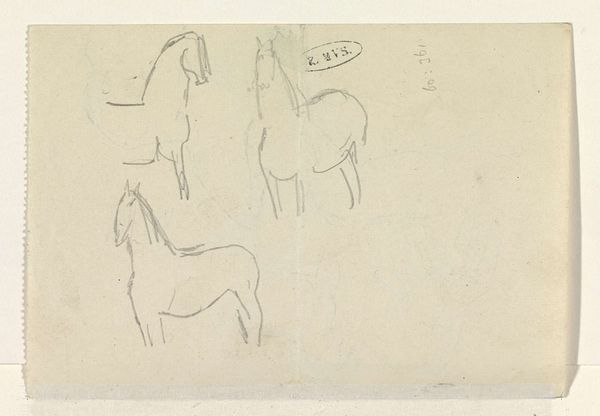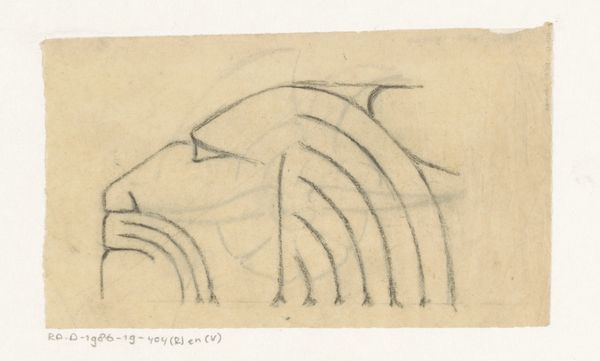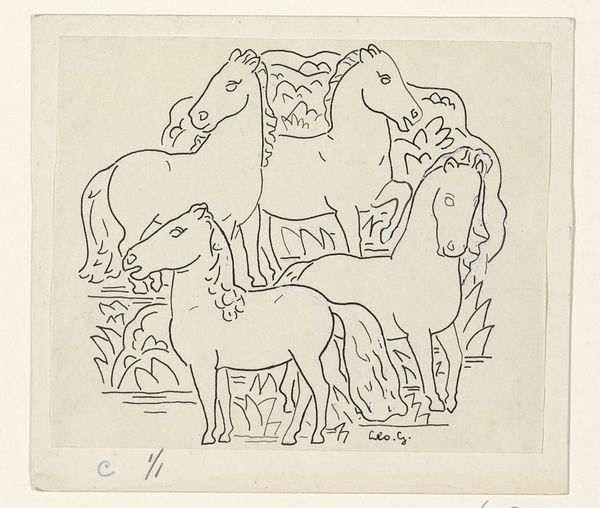
drawing, pencil
#
drawing
#
dog
#
figuration
#
geometric
#
pencil
#
line
Dimensions: height 213 mm, width 242 mm
Copyright: Rijks Museum: Open Domain
Editor: We're looking at "Hond, rennend naar rechts" by Gust van de Wall Perné, made sometime between 1887 and 1911. It's a pencil drawing of a dog, rendered in a very stylized, almost geometric way. It's got a playful and energetic mood. What do you see in this piece, looking at it through a historical lens? Curator: Well, immediately I'm drawn to its relationship to modernist primitivism. This highly simplified, almost cartoonish, depiction of an animal reflects a broader interest in so-called "primitive" art forms during the late 19th and early 20th centuries. Consider the social context: European artists were becoming increasingly exposed to, and fascinated by, art from non-Western cultures. Does this image make you think about the context in which European artists are consuming other art forms? Editor: Yes, the simplification definitely gives it that feel. Was there a specific function for an image like this back then? Curator: That's an interesting question. It could be a preliminary sketch for a larger work, or even an exercise in style, reflecting broader artistic currents. Artists like Picasso and others were appropriating non-Western artistic techniques and philosophies. Think about how museums collected and displayed artworks at the time. They often categorized "primitive" art as less evolved or sophisticated, a perspective which reflects the social hierarchies. Could this dog represent how other artworks from other countries were displayed during this period? Editor: I see what you mean! It makes me think about the power dynamics inherent in the art world at the time, how European artists were positioned relative to artists from other cultures, and the institutional structures that perpetuated those inequalities. I'll certainly look at works of this time with this lens moving forward. Curator: Exactly, understanding these broader social forces is crucial to really unpacking a work like this and really many works made at the time. We can question the artwork and question our own lens on the historical interpretation.
Comments
No comments
Be the first to comment and join the conversation on the ultimate creative platform.
